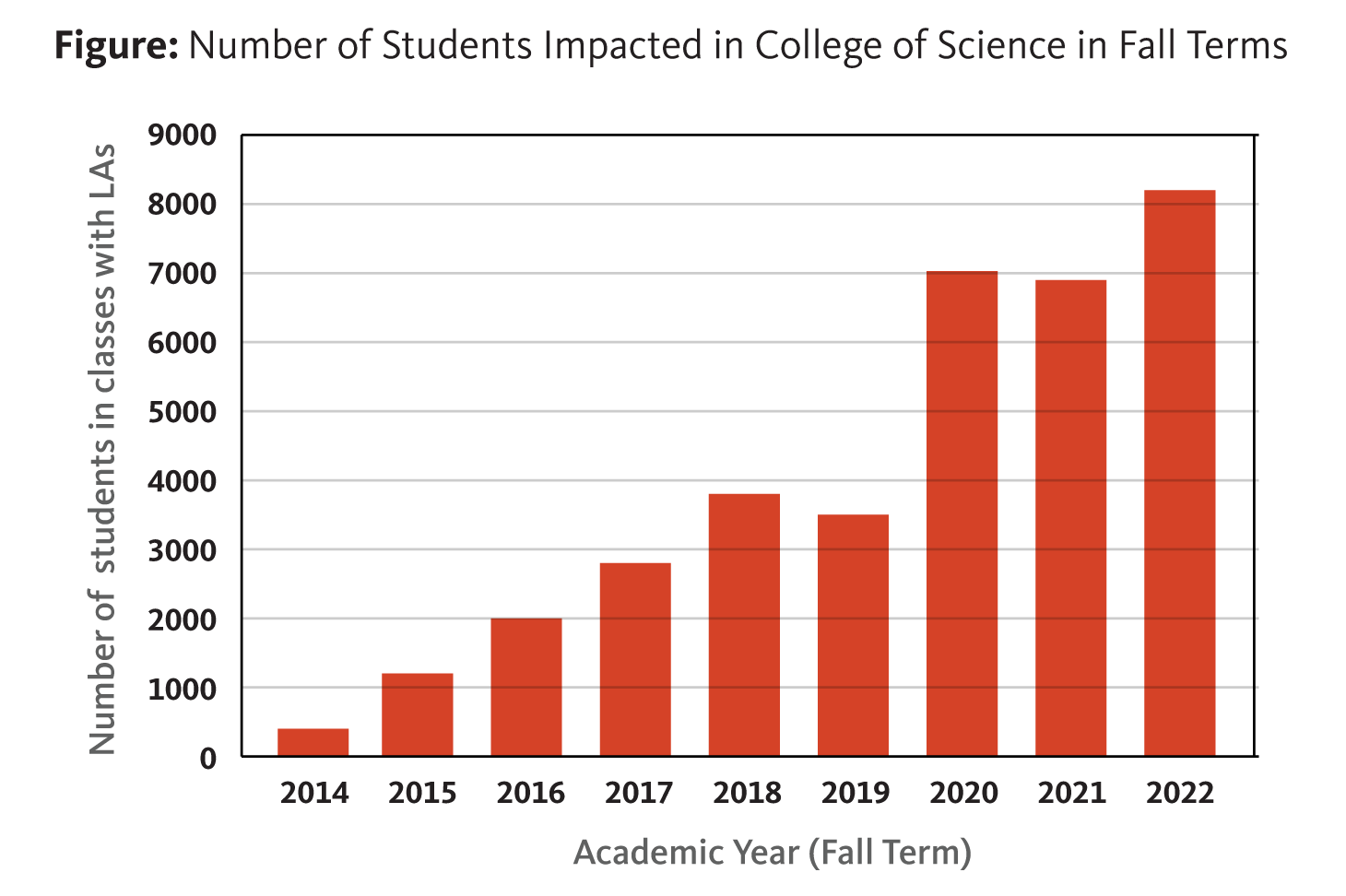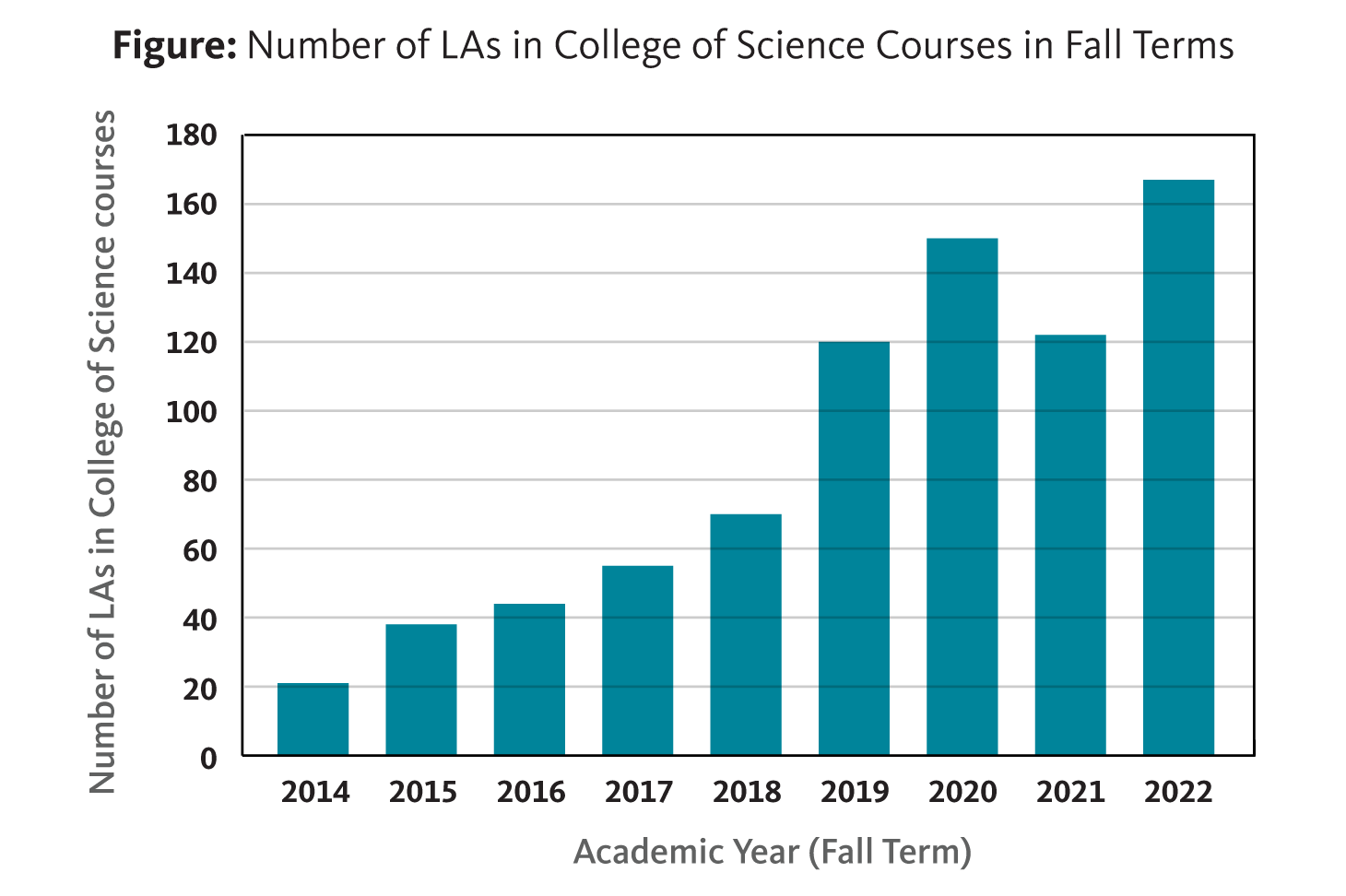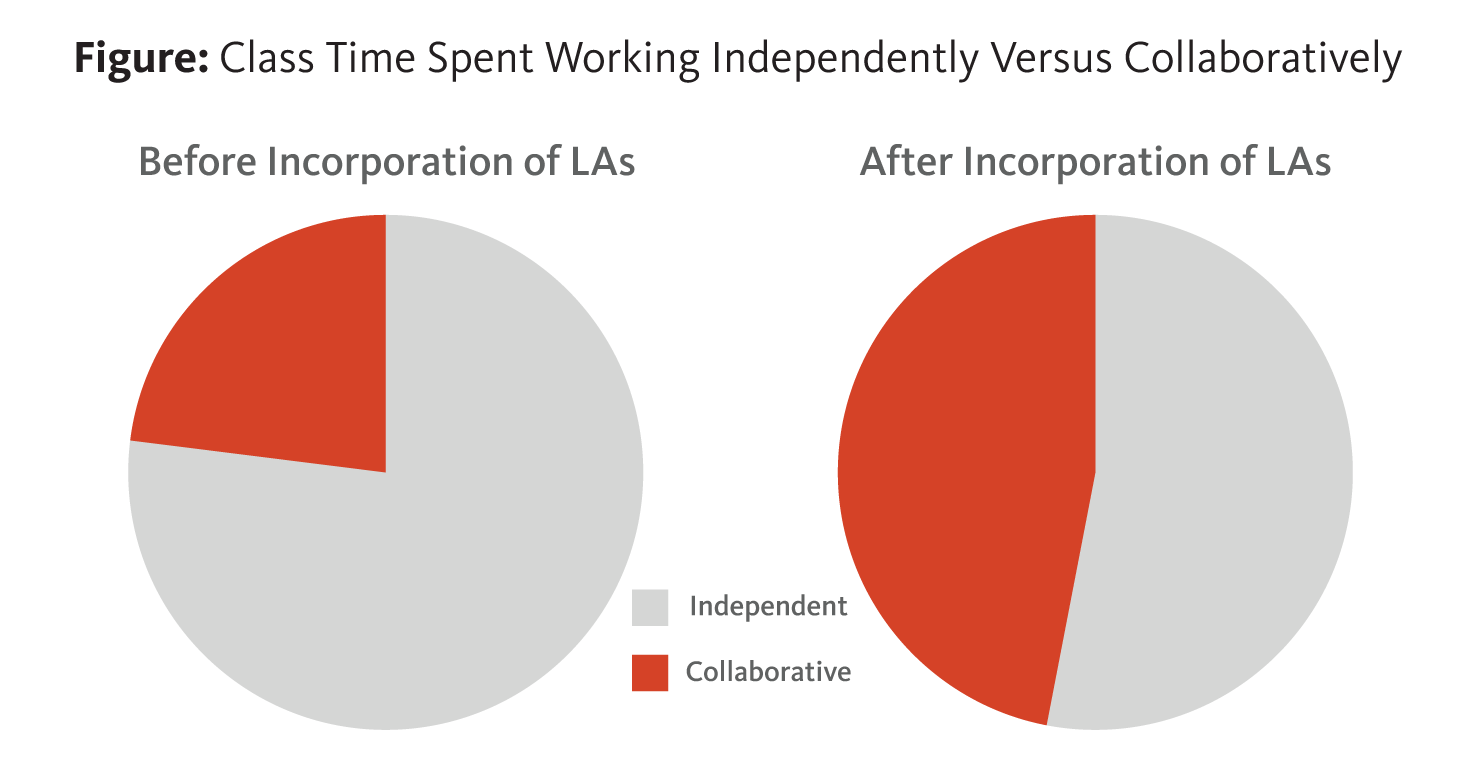Our ongoing research suggests that LAs find the program incredibly valuable for insights into their own learning, mentorship relationships with course faculty, and confidence with disciplinary knowledge
Improving student retention
The impact of our novel teaching strategies has been measured over ten years, with impressive results. The DFW rate has continuously declined in the series. Typically numbering more than 1,000 students, DFW rates for the three BI 21 courses reduced from a high of 33.6% to a low of 7% during a 10-year period from 2009 to 2019.
This and other learning improvements in introductory science and mathematics classrooms have led OSU to the largest first-year retention and six-year graduation rates in OSU’s history.
Classroom observations show that faculty working with LAs do indeed incorporate more active learning into their courses once course transformation occurs. This is true even for “active lectures.”
Our program is growing!
The College of Science LA Program serves courses in 5/7 units (Math, Integrative Biology, Chemistry, Physics and Statistics), with the largest number of LAs serving the most enrolled students in Mathematics.
The LA Program has continued to grow since 2014. This past fall ~170 LAs to help ~8,000 students learn.
As more faculty adopt evidence-based practices for student learning, they utilize LAs to transform their courses. Once trained and having practiced in one course, LAs frequently return to continue facilitating their same course or work with different faculty in other courses.






